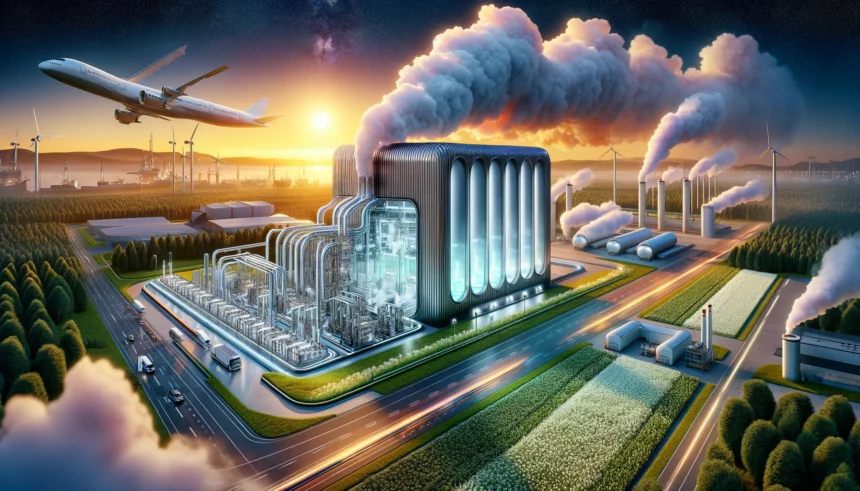In a bold move against climate change, Greenlyte Carbon Technologies, a start-up based in Essen, Germany, is setting its sights on transforming the carbon capture industry. Founded by Florian Hildebrand, Greenlyte aims to significantly reduce the cost of removing carbon dioxide (CO2) from the atmosphere, a venture that has historically been marked by high expenses. With a vision to lower these costs to just 80 euros per ton by 2050, the company has recently secured an additional ten million euros in investment, following the successful launch of its first demonstration plant last fall.
The technology at the heart of Greenlyte’s mission is direct air capture (DAC), a method that, despite being the most expensive option for filtering out harmful CO2, is considered crucial by the Intergovernmental Panel on Climate Change for mitigating global warming. Unlike traditional approaches, DAC technologies promise to not only reduce emissions but also to actively remove existing greenhouse gases from the atmosphere.
Greenlyte’s innovative approach has captured the attention of major investors, including Earlybird, a firm that previously supported the start-up and has decided to continue its investment. Hendrik Brandis, a partner at Earlybird, expressed his enthusiasm for Greenlyte’s potential to decarbonize the air at costs comparable to or even lower than those of CO2 certificates.
The urgency for DAC technologies stems from the stark reality that reducing emissions alone will not suffice to curb the impacts of climate change. The necessity for removal and storage or conversion of greenhouse gases has led to the development of various methods by companies such as Climeworks, Carbon Engineering, and Greenlyte, each with their own cost projections. With prices currently ranging between $600 and $1,000 per ton for CO2 removal, Greenlyte’s goal to reduce this to 80 euros per ton represents a significant advancement.
Greenlyte distinguishes itself by utilizing an electrochemical process likened to a Sodastream by Hildebrand. This process involves air encountering a liquid that captures CO2 molecules, which can then be extracted and potentially converted into green aviation or ship fuel using green hydrogen, creating additional revenue streams.
Looking ahead, Greenlyte plans to complete its next plant by 2026, capable of producing 1,000 tons of CO2 annually from the atmosphere. By 2050, the company aspires to scale its capacity to approximately one billion tons of carbon dioxide per year, positioning DAC technology as a formidable tool in the fight against climate change. Through its groundbreaking work, Greenlyte not only aims to make carbon capture more affordable but also to contribute significantly to global decarbonization efforts.
















